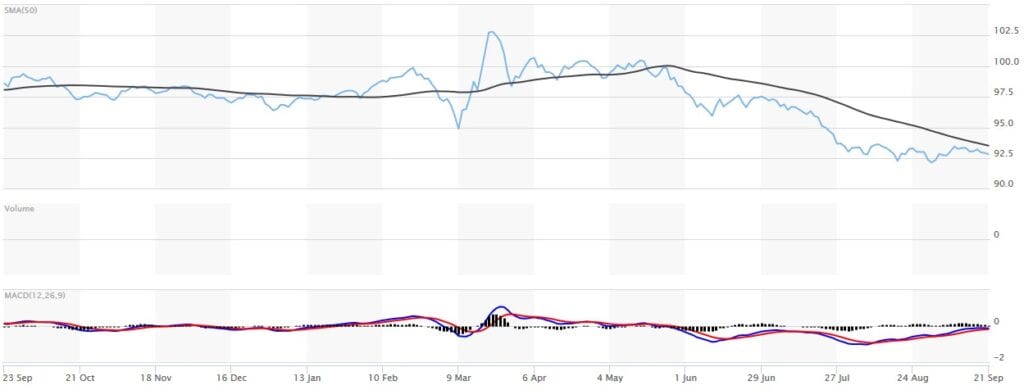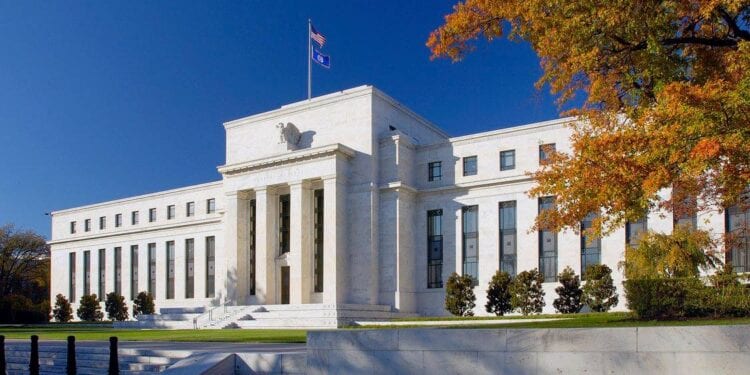The world’s central banks and governments continue to address coronavirus’s economic impact with unprecedented measures. Just last week, we heard from the US central bank’s Federal Open Market Committee after its September meeting. But the Fed’s accommodative policy path has a price tag – inflationary pressures are rising, which is great news for commodities.
The US Federal Reserve has left the short-term Fed Funds rate unchanged in the zero to 0.25% band. The statement following the FOMC meeting advised that the central bank would maintain an accommodative stance to monetary policy until inflation rises. The 2% inflation rate had previously been ‘a line in the sand’ for the Fed, but they have now shifted it to an average.
As a result, committee members will now tolerate inflation rising to 2.25%-2.50% for an extended period, before taking action. The goal is a long-term average of 2%, but low levels of inflation over previous years means the rate would have to rise well above 2% in order to attain the average.
The Fed has also indicated told markets that they stand ready to purchase assets via quantitative easing – which means that they remain highly dovish regarding monetary policy – which is great news for gold and most commodities.
The tidal wave of liquidity during 2020 from the Fed and many of the world’s other central banks via low interest rates and quantitative easing, is unprecedented. Governments have provided fiscal stimulus packages at record levels. If we cast our minds back to the GFC, during the period from June through September 2008, the US Treasury borrowed a record $530 billion to fund stimulus. By comparison, during May 2020, the Treasury borrowed $3 trillion.
During both the GFC and the current COVID crisis, central banks and governments have followed policies that encourage borrowing and spending, whilst simultaneously inhibiting saving. Stimulus and central bank policy increase the money supply and deficits at a record pace, which has significant ramifications for future inflation.
Simultaneously, the US dollar has been trending lower, which is another supportive factor for the raw materials asset class. The graphic below highlights the decline of the US dollar over the past 12 months.

Which is great news for the commodity class, as a weaker US dollar makes commodities more affordable in terms of other currencies. The rise of gold reflects the decline in the value and purchasing power of fiat currency. Central bank and government policies are increasing the fiat money supply at an unprecedented rate.
Price blips like we have witnessed recently with respect to gold are nothing concerning and are part and parcel of gold’s journey. Markets are understandably nervous during the run-in to the US election, with volatility on the rise and COVID cases growing. The case for gold however remains outstanding.
To put things into context, gold’s rise began five years ago, with a further major leg-up two years ago. What we are seeing in the gold market is a consolidation after a period of exceptional price strength. This is to be expected – and is indeed healthy – with respect to a sustainable rising gold market. The bottom-line is that a simple retracement does not take away from gold’s overwhelmingly positive thematic.

Gold’s ascent began five years ago, with interest rates low and question marks beginning to be asked about the world economy. Interest rates were kept low during and subsequent to the GFC, as a means of accelerating and maintaining economic growth, but have never been allowed to return to ‘normalised’ levels. There are inherent dangers in keeping interest rates too low for too long, as they have created asset bubbles and led to artificially high equity markets. Furthermore, central banks have left themselves very little wriggle room to manoeuvre in terms of interest rates, which are already at historically-low levels.
The bottom-line if that inflation, ultra-low rates and a weaker US dollar, are a terrific cocktail for commodity markets, especially gold.












